The football league’s history is littered with siblings, from the Charltons to the Nevilles and the Toures. But a footballing family whose careers constantly mirrored each other’s is the Robledos.
The Robledo story is that of unity. While not always both in the starting XI, brothers George and Ted played together simultaneously at four different clubs in England and their native Chile: Barnsley FC, Newcastle United, Colo-Colo, and the Chilean national team.
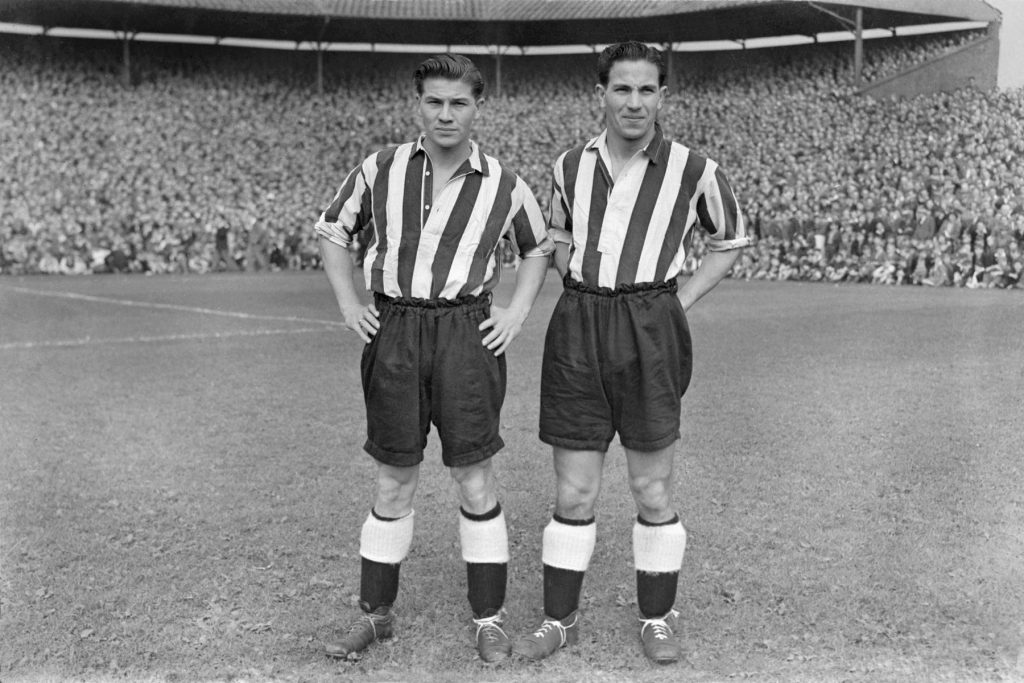
South America has a reputation for producing some of the world’s greatest footballers and George Robledo is arguably one of the first foreign-born players to have an impact on English football.
But while the Robledos were born in Chile, their sporting prowess was nurtured in South Yorkshire and polished on Tyneside – bagging a whole host of silverware along the way.
Legends in the Toon and Tarn, the Robledos owe their success to the village of West Melton.
As with many sporting siblings, one Robledo brother went on to shine brighter than the other. George, the eldest, set many footballing records including the first foreign player to win the Golden Boot for being the First Division’s top goal scorer.
From grassroots games in the Dearne to claiming back-to-back victories at Wembley, George played and scored in the 1939 Totty Cup, 1944 Montagu Cup, 1950 World Cup in Brazil, and 1952 FA Cup – of which his winning goal was immortalised in crayon by a young John Lennon and later used on the cover of his Walls and Bridges album.
The brothers both died decades ago, remembered in South Yorkshire by Reds fans over a certain age who were fortunate enough to see them play at Oakwell or hear stories from family who did.
But now, two new blue plaque have been unveiled to preserve the Robledos’ legacy on the footballing world: one on the wall of their family home in the Dearne Valley on what would have been George’s 96th birthday, and another at their later home in Newcastle seventy years to the day of George’s FA Cup winning goal.
Due to economic and political instability in Chile during the 1930s, George and Ted moved from one mining community to the other, emigrating with their mother from Iquique to West Melton when they were five and two.
Their mother Elsie hailed from Rotherham and moved to Argentina aged 18 to look after the children of a mine manager. When that family were transferred to Chile she joined them, where she met the mine company’s accountant, Aristides Robledo.
The couple married and had three boys: George born 1926, Edward born 1928, and Walter born 1932. When Walter was just six weeks old, Elsie and the boys travelled by ship back to the UK. Their father stayed in Chile, never to see his children again until a brief meeting with George some decades later.
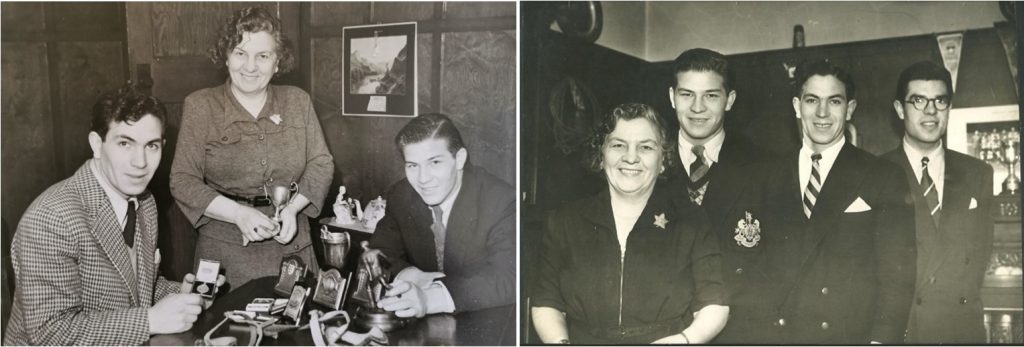
Elsie took over her family’s general store on Barnsley Road following the death of her parents. The boys went to nearby Brampton Ellis School which is where the oldest Robledo lad first showed an interest in football.
Aged 13, George played in the Totty Cup, a competition for Don and Dearne schools, scoring four goals of the 9-0 triumph over Thurnscoe Hill in the 1939 final. At the following year’s final, he scored five of the six Brampton Ellis goals in a 2-2 draw and 4-0 replay against Bolton Modern to retain the cup.
Robledo scored over 50 goals in the 1938/9 season, with the South Yorkshire Times reporting that, had it been normal times (the country was in the throes of World War II), he’d have certainly received his county cap. As a school player, he would score 139 goals in four seasons.
As the war raged on, a teenage George continued to play football, picking up a few amateur appearances with Huddersfield Town and Barnsley while working down the pits on leaving school. In 1944, he ‘guested’ for Wath Wanderers in the Montagu Cup final replay, opening the scoring in a game that lasted almost two hours forty minutes.
After the end of the war, George signed a professional contract with second division team Barnsley FC. In his debut with the Reds, he scored a hat-trick in a 3-0 victory over Nottingham Forest. The following season, brother Ted joined the Reds which would begin a brotherly bond like no other for the Chilean siblings with Yorkshire accents.
Having scored 45 goals in 105 appearances with Barnsley over two and a half seasons, George was approached by top flight Newcastle United in 1949. But while moving up a division appealed to him, he had one strict condition that would be make or break: the Magpies had to sign his brother, too.
Ted had only made five appearances at Barnsley, but they agreed without hesitation, making a record transfer deal of £26,500 for the pair. Tyneside would become the new home for all the Robledos, with Elsie and youngest brother Walter moving into a house rented by the club.
George went straight into the first team, making his debut goal a month later to score the winner in a derby against Sunderland on home turf at St James’ Park. The Newcastle crowd soon claimed him as their own, aided by a winning partnership he struck up with the club’s golden boy, Jackie Milburn.
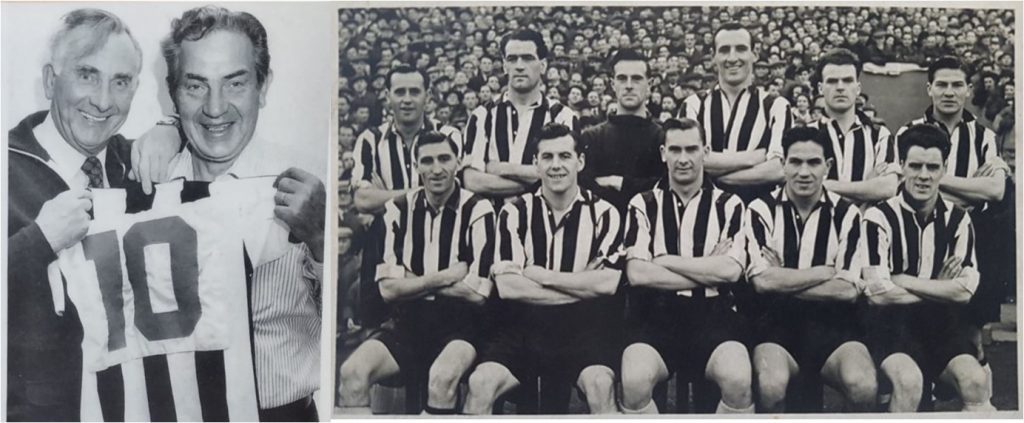
A hard-working and robust playing style cemented his place in the high-flying Newcastle side. Although primarily an inside-forward with a fierce shot and strong heading ability that netted him endless goals, George played in every position except centre-back. He was even once the goalkeeper replacement while facing Manchester United at Old Trafford – but not before scoring a goal against the opposition first.
His remarkable performances for the North East club caught the eye of his home nation, with George called up to represent Chile at the 1950 World Cup in Brazil. Drawn in the same group as England, it was like a busman’s holiday for George, facing up against First Division mainstays that formed the England squad. But while Chile didn’t get past the group stages, George became a national hero for his contribution to the team in all of the club’s games at the competition.
Despite being nicknamed Pancho by his Newcastle teammates, George couldn’t speak a word of Spanish – he’d left Chile while still in short trousers and they didn’t speak much Spanish in West Melton! He was also the only player out of 286 from 13 nations who was playing for a professional league club outside his own country.
The Robledos never gained citizenship so couldn’t play for England, but George earned 31 caps for Chile. He and Ted would also go on to play for their birth country together when Chile hosted the 1955 South American Championship, aka Copa America.
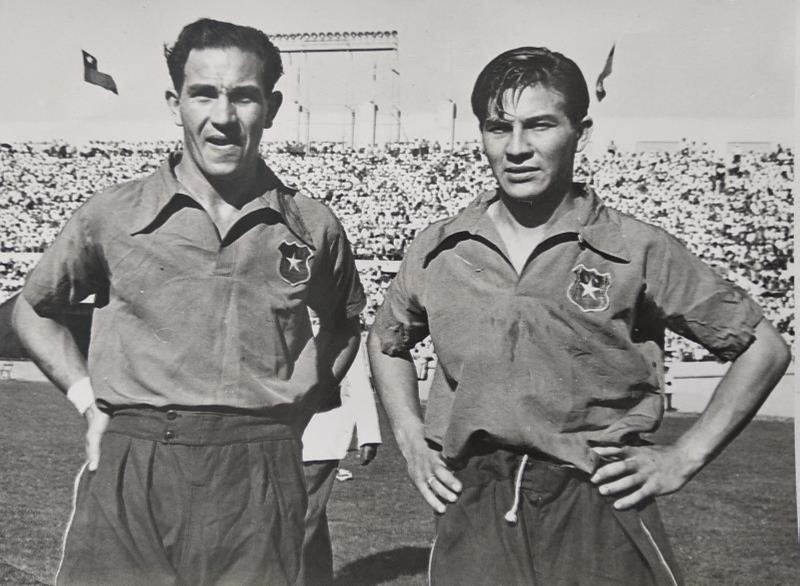
Back on British soil, George continued to make waves in The Magpies’ black and white stripes, with a run of firsts and record-breaking triumphs for the club. During his overall time for Newcastle, he scored a total of 82 league goals in 146 appearances, a top flight football record that was held for almost fifty years until it was broken by Dwight Yorke in 1998. He had a better goal ratio than Newcastle’s Shearer, Milburn, and MacDonald.
The 1951/52 season was George’s most prolific. He became the first non-British top goal scorer in the First Division with a tally of 33 league goals, with the FA verifying this has never been beaten by a non-British player. For context, contemporary overseas Golden Boot winners in the Premier League are Salah with 32 goals, Ronaldo and Suarez with 31, and Henry and Van Persie with 30.
The previous season, George had become the first South American to play in an FA Cup final as Newcastle beat Blackpool to bring home the trophy. He returned to Wembley with Newcastle the following year as defending champions; this time he was joined in the squad by his brother Ted. Again, another first was set as the brothers became the first two foreign players in the same team at an FA Cup final. It would be almost thirty years before two South Americans played together again in an FA Cup final, in the form of Argentinians Ossie Ardiles and Ricky Villa for Spurs in 1981.
George went on to score the only goal of the final against Arsenal to retain the trophy for a second year. More than 60 years later in 2015, Alexis Sanchez became the next Chilean player to score in an FA Cup final. A photograph of Robledo’s header which clinched The Magpies’ win was drawn by an 11-year-old John Lennon and later used on his fifth solo album cover, Walls and Bridges, released in 1974.
Still in his mid-20s, George remained at the summit of the English football league pyramid with Newcastle. But his English career would soon come to an end, fuelled this time by his younger brother and a run of bad play by the Magpies.
Having lived in his brother’s shadow at Newcastle, in 1953 Ted was sold to Chile’s premier team, Colo-Colo, after 37 appearances with Newcastle. Changing formation, George decided to follow his brother back to Chile to play for the Santiago team. A cap on wages in the UK was reportedly what swayed his decision, with Colo-Colo doubling his wages to £14 a week as well as giving him a £4,000 signing bonus.
Again, their doting mother Elsie moved her life to stay with her boys, relocating back to Chile to where their journey first began. Younger brother Walter went too, with the travel fares and house paid for by the club.
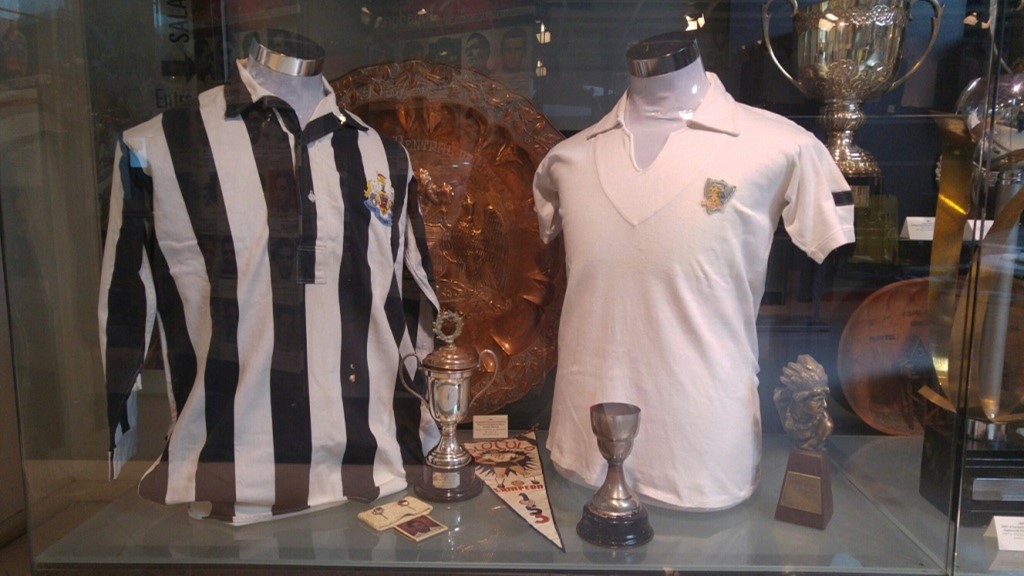
The Robledos played together at Colo-Colo until 1957, during which time they won two league titles and George was top goal scorer in two back-to-back seasons. Ted phased out his career there, and many presumed his older brother would also announce his retirement, having reached the age of 31. However, George went on to play for O’Higgins de Rancagua for a couple of seasons before moving into coaching in 1960 aged 34.
By then, he had a wife Gladys and daughter Elizabeth. The family moved north-west to the coastal city of Vina del Mar where George took a job as sports master of an English school. He also played a role in organising the 1962 World Cup held in Chile.
Ted, meanwhile, was working on oil rings in the Persian Gulf when tragedy struck. He went overboard, presumed missing, in 1970 aged 42 while sailing out of Dubai. Mysterious circumstances surrounded his disappearance; the ship’s captain was tried and acquitted of murder. Ted’s body was never found and his death remains unresolved.
Their mother Elsie died a few years later, having moved back to the UK. Walter had remained in education and, on completion, moved to the US to work for a mining company, which subsequently led to him being transferred back to Chile and then London.
George died of a heart attack in 1989 aged 62, leaving behind his wife and daughter and a legacy in both England and Chile.
All these years later, Elizabeth returned to her father’s childhood home in West Melton in April for the unveiling of the new blue plaque. The event had been postponed for two years owing to the pandemic, with Elizabeth finally able to travel over from Chile to mark the occasion.
Installing a blue plaque was the original idea of Chris Brook, a former teacher who has a hand in running the Totty Cup and Montagu Cup, competitions that George played in and won as a youth. When researching the history of the Totty Cup, a name on the 1939 goal sheet intrigued him – Robledo.
After hearing that the same Robledo had gone on to play in FA Cup and World Cup finals, Chris’ fascination into the family piqued. Coming to realise little was known of him in his childhood home, Chris put the wheels in motion to organise the plaque in 2019.
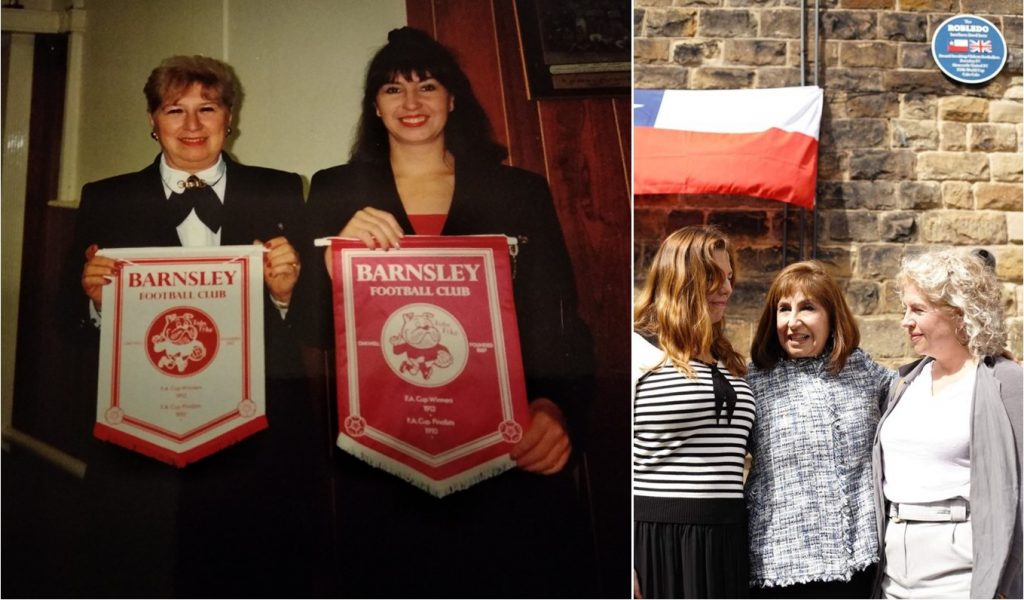
But he needed proof that the family had indeed lived at 97 Barnsley Road, West Melton. A fire had destroyed the 1931 census and the following census didn’t happen because of the war. However, Chris managed to track down a Robledo distant relative, Lucy Thorpe, whose father had the original contracts from when the brothers signed for Barnsley FC, complete with their address.
He then needed permission from the building’s owner. It was no longer a shop, having been turned into flats, but Chris found the owner via a Land Registry search who readily supported the plans.
Another hurdle was the cost, with crowd funding helping raise half the £350 needed and Barnsley FC offering to pay the rest.
And there was to be no plaque without family present. Through the power of social media, Chris was put in touch with Elizabeth who lived over 7,000 miles away in Chile.
At the unveiling, Elizabeth was joined by Chilean diplomat Francisco Tello, and former Barnsley player, Barry Murphy. Elizabeth was then invited as a guest at Oakwell to watch the Reds play Peterborough on April 18th. Following her time in South Yorkshire, she then travelled up north to the Tyne to be a guest at St James’ Park for Newcastle United’s game against Liverpool at the end of April, shortly followed by a second blue plaque unveiling on her family’s Newcastle home in Fenham.






